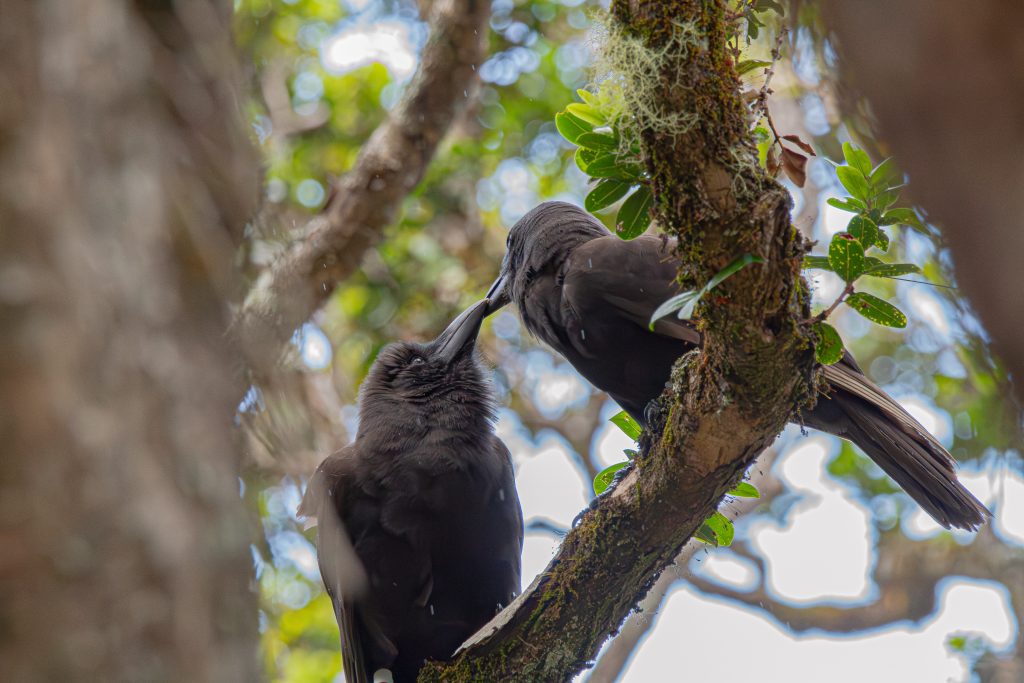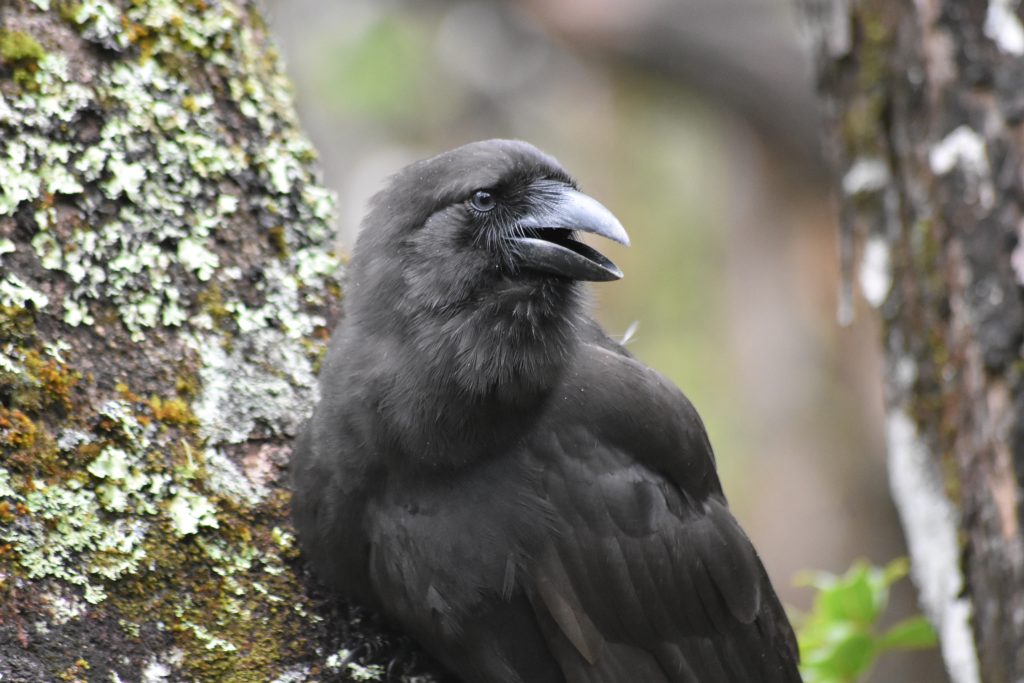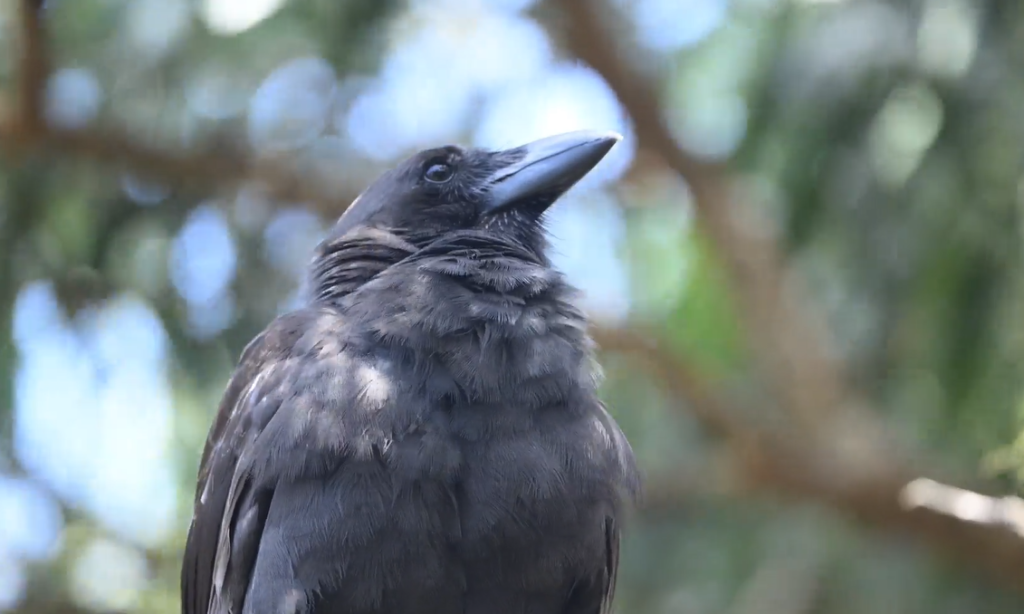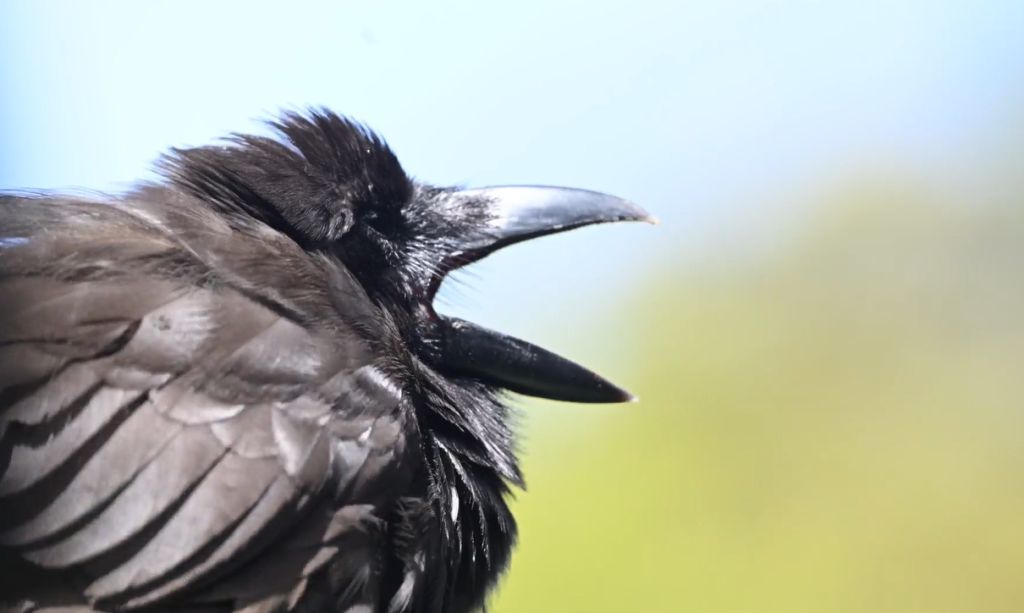ʻAlalā increase range of natural behaviors in the wild, 6 months after release on Haleakalā

The five ʻalalā, or Hawaiian crows, released last November are demonstrating promising wild behaviors, the Department of Land and Natural Resources reports. ʻAlalā are the last remaining species of several native Hawaiian crows that once inhabited the islands.
Captive-reared and carefully prepared for release, the intrepid birds have now been flying free on the slopes of Haleakalā for more than six months. Since their release, the Maui Forest Bird Recovery Project (MFBRP) has conducted daily monitoring of the birds, tracking their movements, documenting behavioral changes and providing supplemental food to support their transition. Over this time, the ʻalalā have continued to mature and adapt, showing an increasing range of natural behaviors — such as foraging for native fruits and insects, territorial vocalizations and pair bonding activities.
“Seeing these birds forage on their own, interact naturally with one another and begin to exhibit courtship behaviors tells us that they’re adjusting to life in the wild,” said Dr. Hanna Mounce, MFBRP program manager. “They’re learning, adapting and behaving more and more like truly wild ʻalalā.”
During the past two months, the monitoring team has witnessed nest building within the ‘alalā cohort. Just last week, the team observed a fully constructed nest and a female regularly sitting upon it. Team expectations remain cautious, but this pairing and nesting behavior is an encouraging step in the reintroduction process; one that has required many hands to pull off.
The ʻAlalā Working Group is a highly collaborative partnership between the US Fish and Wildlife Service, the DLNR Division of Forestry and Wildlife, San Diego Zoo Wildlife Alliance and the MFBRP. The National Park Service and The Nature Conservancy are also active partners in the effort on Maui.
ʻAlalā have been extinct in the wild since 2002. Returning this ecologically and culturally important species to its native forest habitat has long been the goal of the working group. Nest building and pair bonding behaviors are critical steps forward in achieving that vision.
“This moment represents the culmination of decades of planning, perseverance and collaboration,” said Mounce. “Even if this nest doesn’t lead to chicks this year, it shows that the ʻalalā are reconnecting with their forest home. That gives us real hope for the future.”
















_(1)_1750878889339.webp)

